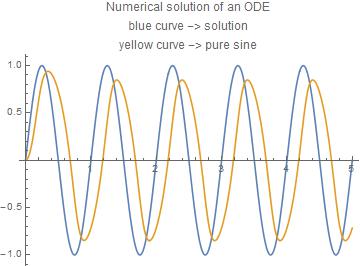As a first step I you can find numerical solutions.
Let us first repeat: the ODE is
eq = x'[t] == -x[t]^3 + Sin[t];
Mathematica does not find an analytic solution
DSolve[eq, x[t], t]
During evaluation of In[13]:= Solve::ifun: Inverse functions are being used by Solve, so some solutions may not be found; use Reduce for complete solution information. >>
(* Out[13]= DSolve[Derivative[1][x][t] == Sin[t] - x[t]^3, x[t], t] *)
So now the numerical solution with which Mathematica has no difficulty:
Let's take 5 periods
tmax = 5 (2 \[Pi]);
The inital vaule can be chosen freely.
y0 = 0; (* other examples to try: 1,-1,5,-5 *)
The solution
sol = NDSolve[eq && x[0] == y0, x[t], {t, 0, tmax}];
xx[t_] = x[t] /. sol[[1]];
Plot of the soluton, together with a pure sine for comparison
Plot[{Sin[2 \[Pi] t], xx[2 \[Pi] t]}, {t, 0, tmax/(2 \[Pi])},
PlotLabel ->
"Numerical solution of an ODE\nblue curve -> solution\nyellow curve -> pure \
sine"]
EDIT
It seems that the solution has the general form
f[t] = d[t] + p[t]
where d[t] is a function decaying with time and p[t] is a "universal" function with period 2 Pi. The initial conditions show up only in d[t].

